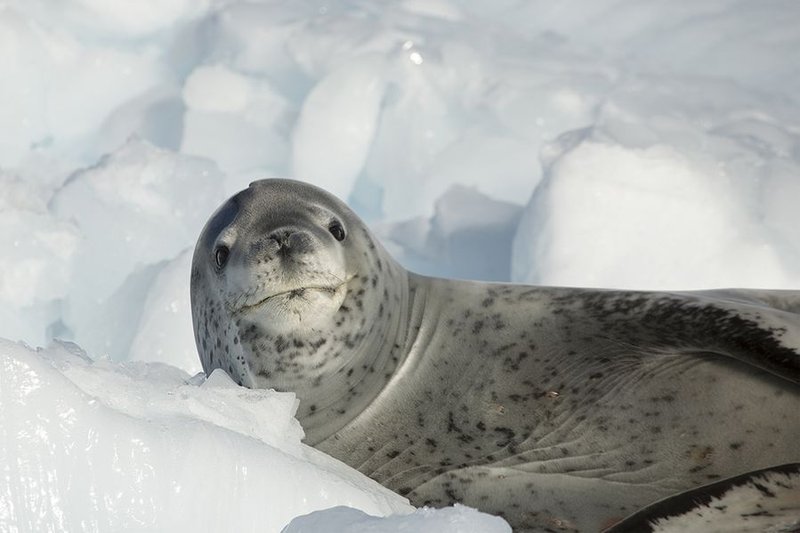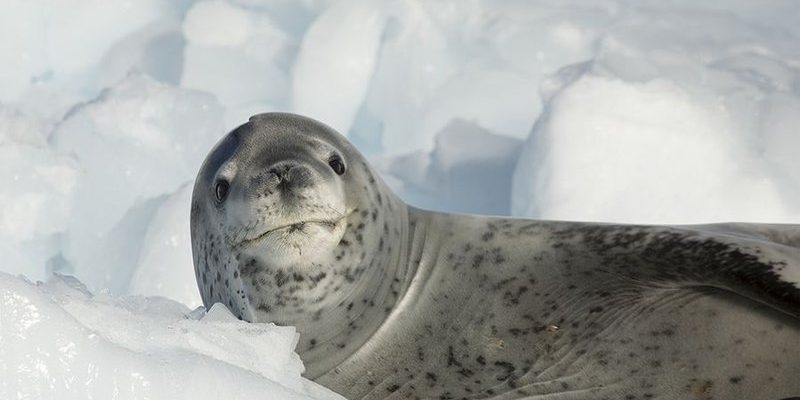
As climate change and human activity continue to impact ecosystems worldwide, it’s essential to ask how these changes affect leopard seals. Are they facing threats that could push them toward the brink of extinction? In this article, we’re diving headfirst into the current status of leopard seals, their habitats, and what’s being done to protect them. So grab your cozy drink, and let’s explore the world of leopard seals and their conservation!
Understanding Leopard Seals: The Basics
Leopard seals are fascinating creatures that primarily reside in the frigid waters around Antarctica. They belong to the family of true seals, known scientifically as *Hydrurga leptonyx*. Their unique spotted coats help them blend into their icy surroundings, making them adept hunters. These seals are often seen lounging on ice floes, soaking up the sun after a long day of hunting penguins or fish.
What truly sets leopard seals apart is their adaptability. They can thrive in different environments, from sea ice to open water. You might think of them as the ultimate survivors in one of the harshest climates on Earth. However, their resilience is continually tested by changing ocean conditions and food availability, which play a significant role in their overall health and survival.
These seals are known for their playful nature, often seen leaping out of the water or engaging with other marine animals. Despite their fierce hunting instincts, it’s essential to remember that they are a vital part of the Antarctic ecosystem, helping to maintain the balance of marine life in their icy domain.
Current Status: Are Leopard Seals Endangered?
When it comes to conservation status, leopard seals are currently classified as “Least Concern” by the International Union for Conservation of Nature (IUCN). This classification might sound reassuring, but it doesn’t tell the whole story. You see, even though their population appears stable, the threats they face are mounting.
The main concern revolves around climate change. Rising ocean temperatures are disrupting the food chain, making it increasingly challenging for leopard seals to hunt effectively. As ice habitats continue to melt, their hunting grounds are shrinking, affecting their ability to thrive. The seals rely on the ice for breeding and resting, so losing it impacts their reproductive success.
Additionally, while they are not hunted extensively, they can fall victim to fishing nets or other human activities. Bycatch, which is when marine animals unintentionally get caught in fishing gear, poses a significant risk. These challenges call for ongoing monitoring and conservation efforts, even if their current status seems secure.
Conservation Efforts for Leopard Seals
Conservationists are actively working to understand and protect leopard seals in various ways. Research programs are crucial for keeping tabs on their populations and health. Scientists are using methods like satellite tracking to study their movement patterns and habitat use. This data helps identify critical areas needing protection.
Global initiatives, including the Antarctic Treaty System, play a vital role in safeguarding the region where leopard seals live. By regulating human activity and minimizing environmental impact, these agreements aim to create a more stable environment for all Antarctic wildlife.
On a local level, organizations and wildlife groups are pushing for more sustainable fishing practices to reduce bycatch and protect the seals’ prey. Community awareness initiatives encourage people to learn about these seals and the interconnectedness of marine ecosystems. Every little effort helps create a safer future for these majestic animals.
The Role of Research in Conservation
Research is the backbone of effective conservation strategies for leopard seals. Scientists are working hard to gather data on their population dynamics, breeding habits, and feeding patterns. This research helps build a clearer picture of how environmental changes impact their lives.
For instance, studies have shown that leopard seals can be sensitive to shifts in prey availability. By tracking their hunting success rates and food sources, researchers can identify potential threats to their livelihoods. This information helps shape conservation policies and management plans that focus on protecting critical habitats and food sources.
Moreover, public engagement in research is growing. Citizen science programs invite people to get involved by reporting seal sightings or participating in data collection. These efforts not only foster a deeper connection to wildlife but also contribute invaluable information to ongoing studies.
What Can You Do to Help? Personal Actions Matter
Feeling inspired to make a difference for leopard seals? You’re not alone! Every action counts when it comes to conservation. Here are a few ways you can contribute to the protection of these incredible creatures:
- Raise Awareness: Share what you learn about leopard seals with friends and family. The more people know, the more support conservation efforts will receive.
- Support Sustainable Practices: Choose seafood that is certified as sustainable. This helps reduce overfishing and protects the seals’ food sources.
- Participate in Clean-Up Efforts: Join local beach clean-ups to keep marine environments healthy and free from harmful debris.
- Contribute to Conservation Organizations: Donating to wildlife groups that focus on marine conservation can help fund research and protection initiatives.
With these simple actions, you can be part of a broader movement dedicated to protecting leopard seals and their habitat.
The Future of Leopard Seals: Hope and Challenges
Looking ahead, leopard seals face a mix of challenges and hope. While their current population is stable, the ongoing impacts of climate change pose a significant threat. It’s crucial to remain vigilant and adaptable in our conservation strategies. The future of these seals depends on our collective commitment to preserving their habitats and ensuring their survival.
Innovative conservation measures, such as marine protected areas and stricter fishing regulations, can create safe havens for leopard seals. By focusing on collaborative efforts between governments, scientists, and local communities, we can work toward a future where these magnificent creatures continue to thrive.
Ultimately, by fostering awareness and taking active steps to protect the environment, we can help ensure that leopard seals remain an enduring symbol of the wild and beautiful Antarctic ecosystem. So, as we sip our coffee and dream of a healthier planet, let’s celebrate the power of collective action in safeguarding our planet’s remarkable wildlife.
In conclusion, while leopard seals may not be endangered now, their future depends on the choices we make today. By staying informed and involved, we can contribute to a brighter tomorrow for these incredible marine mammals.

